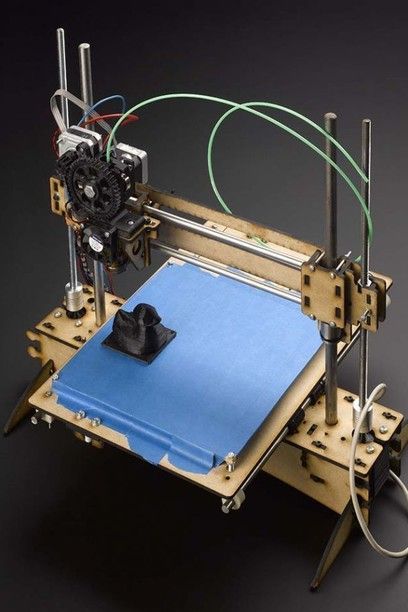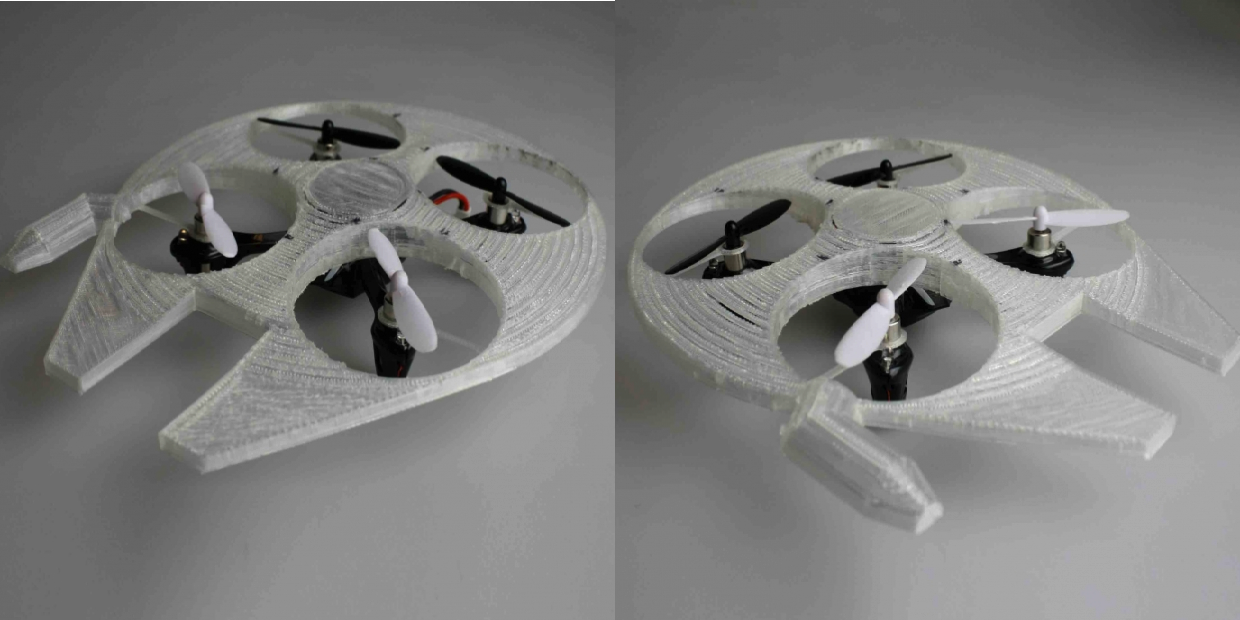3D printer filament melting point
3D Printing Materials – Keene Village Plastics
3D Printing Materials
3D-Solve is a water soluble material that allows you to print your piece with the opportunity to rinse-away supports. Used only as a support material with Modified PLA, PET, PETG, ABS and Nylon.
Acrylonitrile butadiene styrene (ABS) is the same plastic used in Legos. It’s tough, nontoxic and retains color well. It's also easy to shape, but tough to break, as it melts and becomes pliable at about 220 degrees C (about 430 degrees Fahrenheit).
These properties make ABS very suitable for 3D printing. You do need a large heater to reach that 220 degrees C melting point, but ABS becomes soft and pliable when heated and then sets quickly. A printer with a heated print bed is also usually needed as ABS will stick to a hot print bed.
It’s also water- and chemical-resistant. ABS does produce a slightly unpleasant smell when heated, and the vapor can contain some nasty chemicals, so you'll need good ventilation. Because ABS is broken down by UV radiation, it isn't suitable for long-term outdoor use, as it loses its color and becomes brittle.
Pros: Tough, impact-resistant material; Nontoxic and water resistant
Cons: High melting point; Unpleasant fumes; Not suitable for outdoor use
High Impact Polystyrene (HIPS) is a tough, rigid plastic material with high impact strength which can be guillotined, punched, routered or sawn easily, and is readily available in a wide variety of colors. Used widely for toys, packaging, signs, kicking plates, display and point of sale.
Some people choose to print with HIPS by itself but the real magic of this filament is if you have a dual extruder and you use it as a dissolvable support material.
HIPS is as easy to print with as ABS but is much less likely to warp. HIPS is ideal for printing in conjunction with ABS because it has a similar strength and stiffness profile to ABS which means they complement each other well. HIPS prints best with the bed at 55°C and the extrusion temp around 225°C.
HIPS prints best with the bed at 55°C and the extrusion temp around 225°C.
Pros: Impact & water resistant, Dissolvable by L-Limonene
Cons: High printing temp, Ventilation required
Nylon is used to make clothes. In fact, polyamides are most used for synthetic fibers in clothing. Nylon can also be used to make other materials, such as parachutes, ropes, string for tires, carpets, fishing nets and cloth and socks. Nylon was invented by Wallace Carothers at Du-Pont.
Nylon is also an incredibly useful plastic for applications that actually do require both a plastic material as well as a high melting temperature. It is also incredibly diverse. Nylon can be adapted to a wide variety of uses because of the many different variants in production and the adjustable material properties of these variants resulting from the different materials Nylon can be combined with.
Pros: Impact & water resistant, Dissolvable by L-Limonene
Cons: Relatively low impact strength,
Polyamide Polyolefin and Cellulose (PAPC) filament utilizes all FDA compliant ingredients for producing compounds that include pellets, filaments and powders in 3D printing part production. There are PAPC compounds with a high strength to weight ratio, having a high degree of exibility with bio absorbable qualities. Recommended for high strength applications where FDA compliant ingredients are required.
There are PAPC compounds with a high strength to weight ratio, having a high degree of exibility with bio absorbable qualities. Recommended for high strength applications where FDA compliant ingredients are required.
Polycarbonate (PC) is a dimensionally stable, transparent thermoplastic with a structure that allows for outstanding impact resistance. With high-performance properties, Polycarbonate is the leading plastic material for various applications that demand high functioning temperatures and safety features.
Because of its durable make-up, polycarbonate is often the preferred thermoplastic over materials like PMMA and Acrylic. Polycarbonates are unique in its working temperatures and ability to experience minimal degradation between heating and cooling points. Polycarbonate features a high working temperature of 266 degrees Fahrenheit and cooling temperatures at -40 degrees Fahrenheit.
Pros: High impact resistance, UV filtration, handles repetitive melting
Cons: Scratchable, can be toxic
Polylactic acid (PLA) is a polymer plastic, made from biological materials like cornstarch or sugarcane.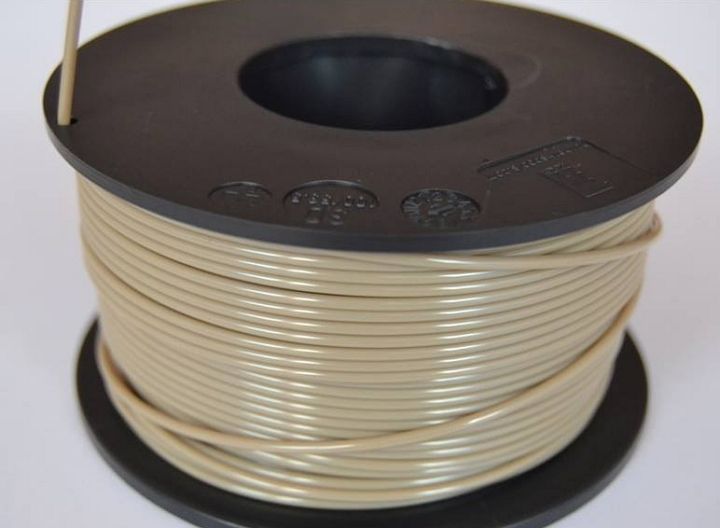 It is similar to the material used in biodegradable plastic packaging and melts at between 180 and 200 degrees C, depending on other materials that are added for color and texture. PLA is a tough, resilient material with a matte, opaque quality, but it is not as tolerant of heat as ABS is. PLA begins to deform at temperatures above 60 degrees C, and it is not water or chemical resistant. There is a slight smell when it is heated, rather like microwave popcorn, but no toxic odors or vapor.
It is similar to the material used in biodegradable plastic packaging and melts at between 180 and 200 degrees C, depending on other materials that are added for color and texture. PLA is a tough, resilient material with a matte, opaque quality, but it is not as tolerant of heat as ABS is. PLA begins to deform at temperatures above 60 degrees C, and it is not water or chemical resistant. There is a slight smell when it is heated, rather like microwave popcorn, but no toxic odors or vapor.
PLA is generally the preferred option for low-cost 3D printers, because it is easier to print with than ABS, as it is stickier. It will stick well to a print base covered in white glue or blue painter's tape, which means that a heated print bed is not needed. The material is also biodegradable; like other corn- or sugar-based materials, it is slowly consumed by many common bacteria. It will last a long time in normal conditions, though. It's only when buried that it breaks down.
Pros: Easier to print with than ABS; Biodegradable
Cons: Prints degrade over time; Rougher texture than ABS
Polyethylene Terephthalate Glycol (PETG) is an extreme high strength filament and can achieve very sturdy and strong prints. It has very low shrinkage, making this perfect for larger flat surfaces. PET itself, or Polyethylene terephthalate, is actually not what you’ll typically 3D print, that would be PETG or the glycol-modified version of PET. The glycol content keeps the plastic from crystallizing, making it a bit softer, chewier and having it melt at a lower temperature – pretty much ideal for 3D printing on the common machines. PETG print at around 230°C, pure PET at 260°C or more.
It has very low shrinkage, making this perfect for larger flat surfaces. PET itself, or Polyethylene terephthalate, is actually not what you’ll typically 3D print, that would be PETG or the glycol-modified version of PET. The glycol content keeps the plastic from crystallizing, making it a bit softer, chewier and having it melt at a lower temperature – pretty much ideal for 3D printing on the common machines. PETG print at around 230°C, pure PET at 260°C or more.
PETG is a high-impact, co-polyester material, but it does not hold up well in outdoor applications unless UV resistant stabilizers are added. Because of its soft surface, it is also vulnerable to scratching in high contact environments. PETG is FDA compliant, so it can be used in medical and food applications.
Pros: Simple to sand, high degree of flexibility, resists warping
Cons: Some stringing, easier to scratch than ABS, higher temp
Polylactic acid (PLA) is a polymer plastic, made from biological materials like cornstarch or sugarcane.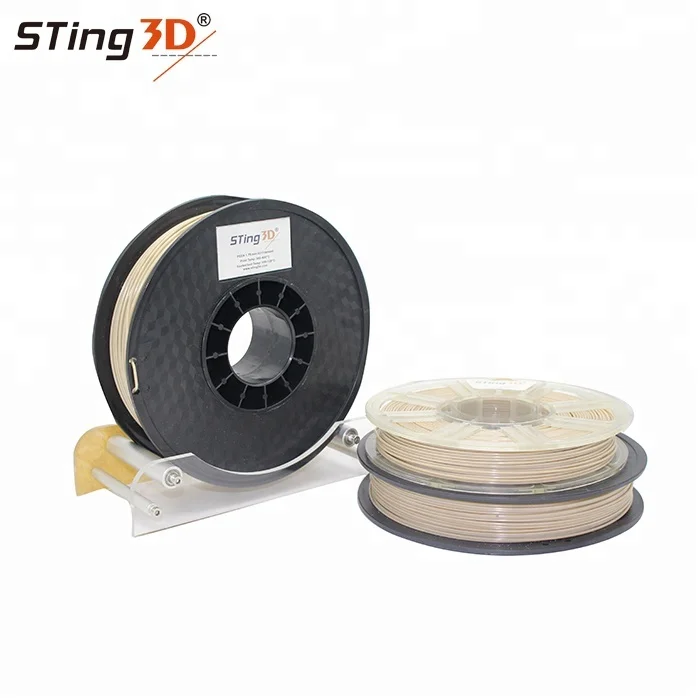 It is similar to the material used in biodegradable plastic packaging and melts at between 180 and 200 degrees C, depending on other materials that are added for color and texture. PLA is a tough, resilient material with a matte, opaque quality, but it is not as tolerant of heat as ABS is. PLA begins to deform at temperatures above 60 degrees C, and it is not water or chemical resistant. There is a slight smell when it is heated, rather like microwave popcorn, but no toxic odors or vapor.
It is similar to the material used in biodegradable plastic packaging and melts at between 180 and 200 degrees C, depending on other materials that are added for color and texture. PLA is a tough, resilient material with a matte, opaque quality, but it is not as tolerant of heat as ABS is. PLA begins to deform at temperatures above 60 degrees C, and it is not water or chemical resistant. There is a slight smell when it is heated, rather like microwave popcorn, but no toxic odors or vapor.
PLA is generally the preferred option for low-cost 3D printers, because it is easier to print with than ABS, as it is stickier. It will stick well to a print base covered in white glue or blue painter's tape, which means that a heated print bed is not needed. The material is also biodegradable; like other corn- or sugar-based materials, it is slowly consumed by many common bacteria. It will last a long time in normal conditions, though. It's only when buried that it breaks down.
Pros: Easier to print with than ABS; Biodegradable
Cons: Prints degrade over time; Rougher texture than ABS
Bronze filament for 3D printing is used when printing rustic-like objects. This filament contains bronze combined with Polylactic Acid (PLA) filament. Print, sand and polish your pieces to achieve the look of bronze.
This filament contains bronze combined with Polylactic Acid (PLA) filament. Print, sand and polish your pieces to achieve the look of bronze.
Copper filament for 3D printing is used when printing metallic-like objects. This filament contains copper combined with Polylactic Acid (PLA) filament. Print, sand and polish your pieces to achieve the look of copper.
Wood filament for 3D printing is used when printing wooden-like objects. This filament contains recycled wood combined with Polylactic Acid (PLA) filament and some binding polymers. Printing wood filament is very similar to printing PLA filament.
Options: natural, birch, cherry, pine and walnut.
desktop printer - What is the melting temperature of a 3D printed part?
Asked
Modified 2 years, 3 months ago
Viewed 15k times
$\begingroup$
Here is the context
I've got an old car for which I have a small plastic piece who is broken.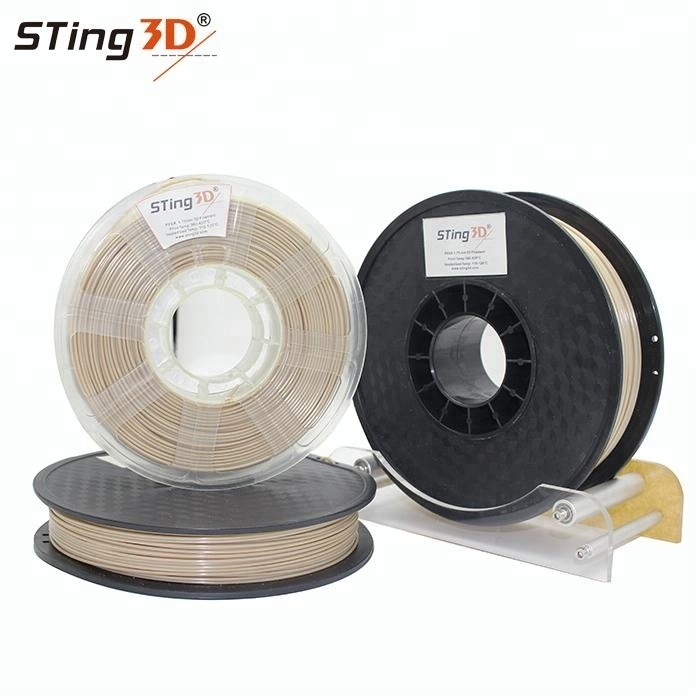 As it's an old car and a very specific piece, I can't find it anymore. So I was thinking about 3D printing it.
As it's an old car and a very specific piece, I can't find it anymore. So I was thinking about 3D printing it.
My problem is this piece is on the carburetor, so close to the engine. This means, it can heat a lot, close to 90-100 °C.
My question
Do the pieces created with the common 3D printing techniques melt at 100 °C? If yes, what kind of other 3D printing technique can I use?
Here is the piece I want to recreate (sorry for the bad quality), the scale is in cm.
- desktop-printer
$\endgroup$
2
$\begingroup$
The number you're looking for is the glass transition temperature (the lowest temperature at which the material can flow or warp), not the melting point. This depends on what material you're using; approximate temperatures for common printable materials are:
- PLA: 60˚C
- PETG, high-temperature PLA: 95 ˚C
- ABS: 105˚C
- Nylon: typically 70˚C or above ("Nylon" is a large family of similar polymers)
- Polycarbonate: 145˚C
Any plastic under your hood is probably either nylon (for its durability, impact resistance, and chemical resistance) or ABS (for its strength and heat resistance).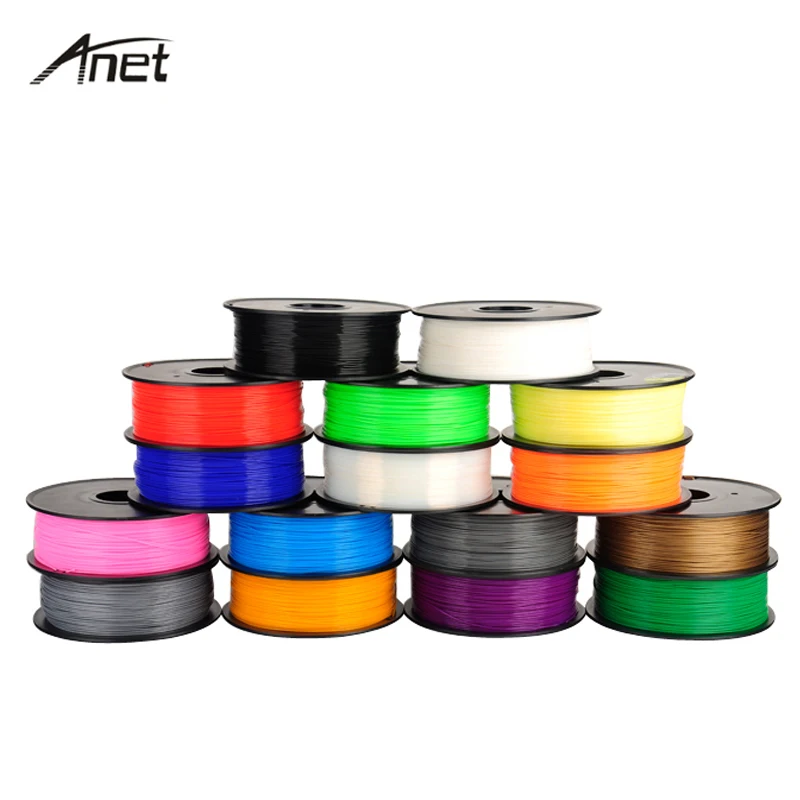 These are both difficult materials to print: ABS emits toxic fumes while printing, and tends to warp if you're not using a heated enclosure, while nylon readily absorbs water from the air, causing the filament to bubble as it's printed. Further, many printers can't handle the high temperatures needed to work with these materials.
These are both difficult materials to print: ABS emits toxic fumes while printing, and tends to warp if you're not using a heated enclosure, while nylon readily absorbs water from the air, causing the filament to bubble as it's printed. Further, many printers can't handle the high temperatures needed to work with these materials.
If you're going to print this yourself, I recommend using PETG and inspecting the part after a few days of use to see if it's warping. PETG is reasonably easy to print and comes close to your target heat resistance.
If you're going to get someone else to print it, I recommend using ABS. It's probably what the original part was made of, and anyone willing to print ABS for you will have the heated enclosure and ventilation system to deal with printing it.
I'd avoid polycarbonate unless you know the original part was made of it. Although PC is strong and heat resistant, it's also somewhat brittle and vulnerable to scratching.
High-temperature PLA is also brittle, and requires a heat-treating step that will change the dimensions of the part. It will likely take several tries to get something that comes out the right size, and even then, you risk having the part break when your car hits a bump.
It will likely take several tries to get something that comes out the right size, and even then, you risk having the part break when your car hits a bump.
$\endgroup$
4
$\begingroup$
Depending on the exact mechanical load and material used to print, you might get away with 100 °C.
Next to the melting temperature required to print the material (which will always be substantially higher than the maximum useable temperature!), you probably also want to have a look at the glass temperature of your specific material. Around that temperature your material becomes soft (rubber like) and can deform permanently when cooling down again. Chances exist that under a considerable mechanical load, the part will deform at even lower temperatures.
Maybe it would help to post a picture or describe the exact component you're trying to replicate. It might help in finding an alternative solution. (E.g. carving out of say PEEK to say anything.)
It might help in finding an alternative solution. (E.g. carving out of say PEEK to say anything.)
$\endgroup$
$\begingroup$
I recommend this video by CNC Kitchen, as it shows an interesting, accurate and detailed, side-by-side comparison of heat deformation of custom 3D printed test samples, printed from various materials:
- PLA
- PETG
- ABS
- HT-PLA
- 3dkTOP
He even CNCs a custom, yet simple, test rig in order to carry out the test.
Well worth a watch.
The results for the various filaments can be seen in this graph, taken from the video:
In summary, the annealed 3dkTOP filaments perform very well, without failure, and annealing PLA helps considerably (although some shrinkage is incurred)
$\endgroup$
3
$\begingroup$
I only use an ingeo 850 or 870 PLA that have different melting temp and more resistant the normal PLA. It's a lot easier to print with a normal desktop consumer printer then ABS or NYLON Doesn't have the same characteristics as a nylon filament but it can be used inside a car, I have used to print some parts for my car.
It's a lot easier to print with a normal desktop consumer printer then ABS or NYLON Doesn't have the same characteristics as a nylon filament but it can be used inside a car, I have used to print some parts for my car.
https://www.natureworksllc.com/~/media/Files/NatureWorks/Technical-Documents/Technical-Data-Sheets/TechnicalDataSheet_3D870_monofilament_pdf.pdf?la=en
(sorry but it's in spanish but a termal test)
Another option is to make a mold with the 3d printer and use a high temp resin
$\endgroup$
$\begingroup$
You might want to check out printing with nylon. It's not typical of most 3D printers but you could always have it printed with a printing service, since it's a one off part. They can withstand a good amount of heat.
$\endgroup$
1
$\begingroup$
Have the part commercially printed in metal.
I haven't used a commercial 3D print service so I can't recommend one, but I know there are many out there and the prices are reasonable. For example, I found that if their terms of service did not prohibit weapons, I could have had Shapeways print magazines for my FX air rifle in gold plated, hand polished stainless steel for less than FX charges for one machined out of aluminum.
So, print the part yourself in whatever material you have available to ensure that it fits and operates correctly. Then upload the file to a company that can print it in metal.
A possible DIY alternative, depending on the shape and size of the part, would be lost PLA casting. Hobbyists usually do this with aluminum.
$\endgroup$
$\begingroup$
Do the pieces created with the common 3D printing techniques melt at 100 °C?
The problem here is the "common 3d printing techniques".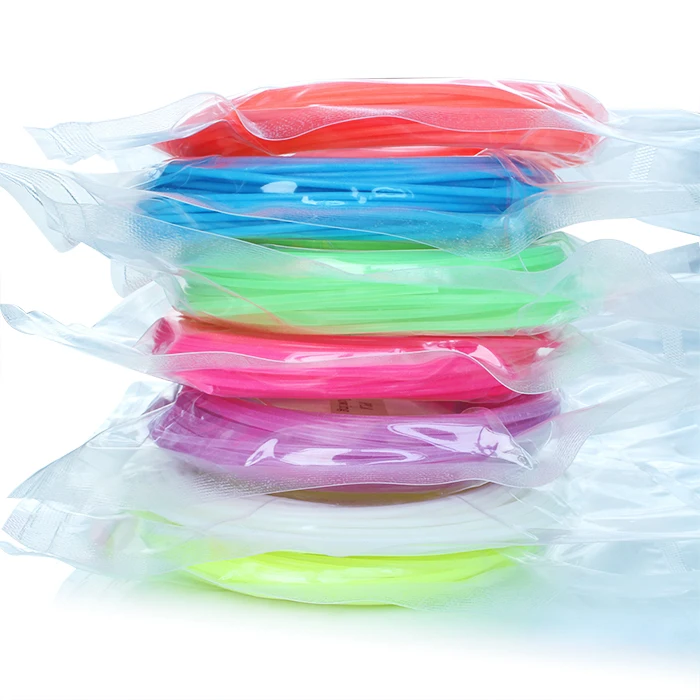 If you mean END USER DESKTOP - yes. PLA, ABS etc. have all glass temperatures (where they get soft) around this number. Melting is not something you care about - because it will deform WAY earlier. Melting is when it gets liquid, you care when it looses stability.
If you mean END USER DESKTOP - yes. PLA, ABS etc. have all glass temperatures (where they get soft) around this number. Melting is not something you care about - because it will deform WAY earlier. Melting is when it gets liquid, you care when it looses stability.
If you talk NOT about desktop, then no - common 3d printing techniques THEN include laser syntering nylon as well as FDM printing materials like PEEK which have melting temperatures WAY higher. KEEP gets soft around 143 and melts around 343 degree, though some have sueful operating temperaratures up to 250 celsius. "Common" is a very vague definition in the higher end area because there are quite a number of main market different techniques that you basically never see in the consumer market due to price.
The problem is that those are expensive, so desktop users do not use them. They also require high temperature chambers AND special 3d printers. Nothing you can not do - Slice Engineering sells a hotend that can go up to 450 degree or so - but they are NOT common on the desktop side as they are (also) quite expensive. Heck, the are just now putting that into the Marlin firmware (you also need to measure this, and the thermistor table for their sensor was just added as #67 to marlin). I am reworking a printer with this technique (just for fun) and - the extruder / hotend combo costs around the same as the whole printer originally did.
Heck, the are just now putting that into the Marlin firmware (you also need to measure this, and the thermistor table for their sensor was just added as #67 to marlin). I am reworking a printer with this technique (just for fun) and - the extruder / hotend combo costs around the same as the whole printer originally did.
If yes, what kind of other 3D printing technique can I use?
Basically any that works with the temperature band, which does include FDM printing. That said:
- I think you really are wrong with the temperatures. Close to the engine may be higher than 100 degree, me thinks. If I am wrong (and that really depends on how close to the engine block it is), this may be ABS. ABS or PLA variants are available with glass transition temperatures above 130 degree, so this COULD work, depending on the exact material you use.
- I would basically print it in anything common (pla) to see that it fits (NOT use it), then have a 3d printing service make it out of some engineering material.
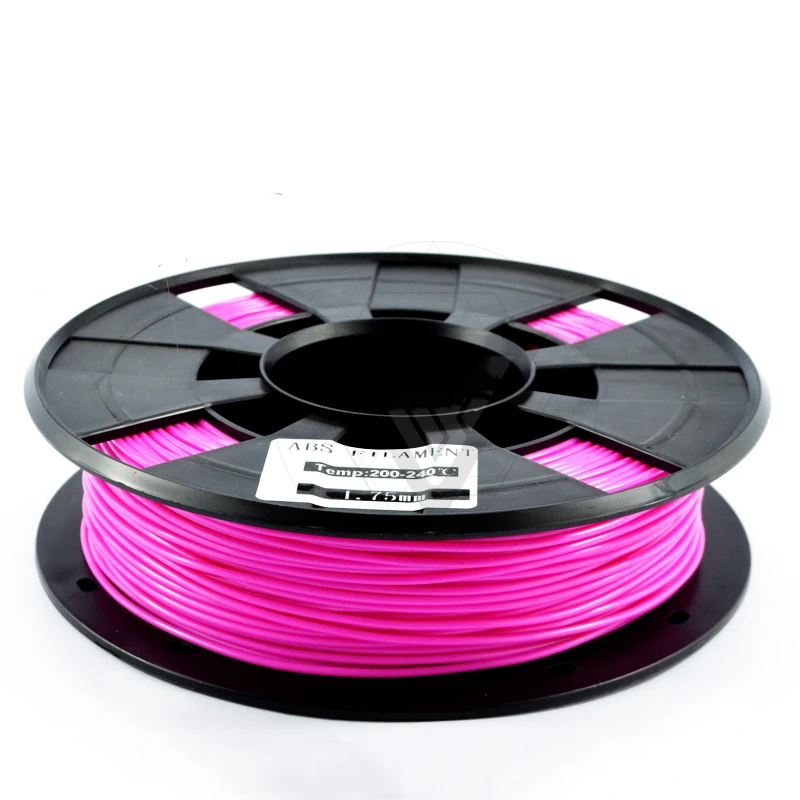 They will also be able to choose the best material for you. This is for higher temperature and possibly not FRM process. They will know what to use.
They will also be able to choose the best material for you. This is for higher temperature and possibly not FRM process. They will know what to use.
Another problem is - we do not kknow anything about this part. is it under pressure? I ask for a number of reasons.
- 3d printing may be less stable in certain directions than in others. Generally LESS stable than parts that are injection molded, unless you use some special techniques not common in consumer laser printers (i.e. plasma fusing the layers, which Essentium does, or laser syntering where there are not real layers to see). You MAY be able to work around it, by making the part larger / heavier (the walls), but this is something to consider. You can get more information on Essentium's work i.e. here: https://3dprinting.com/news/essentiums-fusebox-plasma-3d-printing/ - they bascially can reheat the plastic to fuse way better. They also print with speeds up to 1m/second, extremely impressive to see.
- Standard 3d printing may be leaking, particularly under pressure.
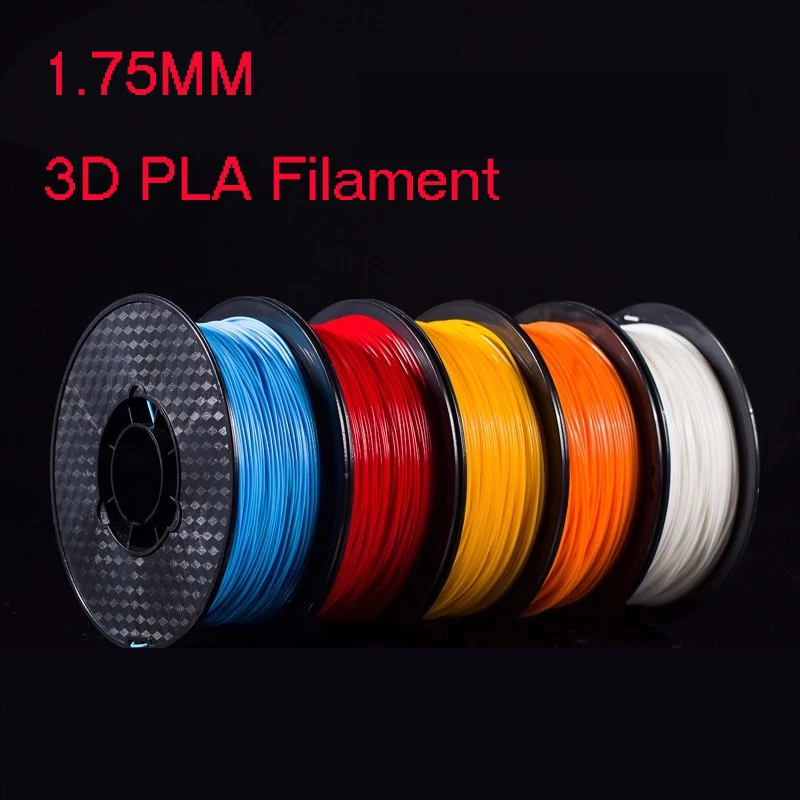 This is a problem as above (the layers not being perfectly bonded). Again, more layering may solve this, as would a larger nozzle.
This is a problem as above (the layers not being perfectly bonded). Again, more layering may solve this, as would a larger nozzle.
$\endgroup$
$\begingroup$
Although metal casting has been briefly mentioned, another approach to your problem would be to create a silicone mold from your print and cast the part using epoxy or polyurethane, both of which have the desired strength and heat properties.
Here is an example of this technique
$\endgroup$
$\begingroup$
I would take a different approach. I would use brass or copper, machine it on a lathe to get the two diameters (you need to start with a thick piece so you are left with reasonable wall thicknesses), or, alternatively, use spin-forming to enlarge it to the diameter needed (works with copper, and you can use normal thin-walled pipe because you are only re-forming it, not cutting anything away), drill a hole in the side, thread it, and use a die to create a thread on the insertion pipe. then I'd screw it it, and finally solder it into place with a high-strength (lead-free) solder. The threading helps reduce stress on the solder joint; I can imagine it would crack a straight solder-only join without much usage at all. That right-angle joint of small diameter is going to be the weak point. It is the most likely place to have it snap, or start delaminating. That part was probably injection-molded as a single piece, reducing the effects of stress and eliminating any consideration of delaminating.
then I'd screw it it, and finally solder it into place with a high-strength (lead-free) solder. The threading helps reduce stress on the solder joint; I can imagine it would crack a straight solder-only join without much usage at all. That right-angle joint of small diameter is going to be the weak point. It is the most likely place to have it snap, or start delaminating. That part was probably injection-molded as a single piece, reducing the effects of stress and eliminating any consideration of delaminating.
Note also that some of these parts have been computer-designed to precise dimensions, and a slight change in the ID of the side-pipe, or even its OD, might make a drastic change in its behavior.
If your only tool is a hammer, all your problems look like nails.
$\endgroup$
$\begingroup$
Nylon is probably your best bet. It is resistant to some chemicals as well. Figure on printing it at around 250 °C.
Figure on printing it at around 250 °C.
It might do the job.
$\endgroup$
5
Types of materials for 3D printing
Types of materials for 3D printing
3D printing or "additive manufacturing" of objects of almost any geometric shape is now ubiquitous.
3D printing is based on the concept of building an object in successive layers that represent the contours of the model.
In fact, 3D printing is the exact opposite of traditional production and processing methods such as milling or cutting, where the shape of the product occurs by removing excess material (“subtractive manufacturing”).
Models made using the additive method can be used at any stage of production, both for the production of prototypes (rapid prototyping) and as finished products themselves (rapid production).
3D printing technologies are used in architecture, construction, industrial design, automotive, aerospace, military, engineering, medical, bioengineering, fashion and footwear, jewelry, education, geographic information systems, food processing and many more other areas.
In home use, additive technology is also gaining popularity, and often the capital cost of acquiring a 3D printer is paid off by savings on household production of various items.
There are currently several methods of additive manufacturing. The main differences between them are in the method of applying the layers and the consumables used.
The most common methods are Fusion Deposition (FDM or FFF), liquid polymerization (stereolithography/SLA) and digital LED projection (DLP)), in addition, less common methods are selective laser sintering (SLS), selective laser melting (SLM), direct metal laser sintering (DMLS).
FDM/FFF method
Advantages of this technology: additives, but also based on thermoplastics)
Let's talk more about consumables for 3D printers with technology (FDM/FFF).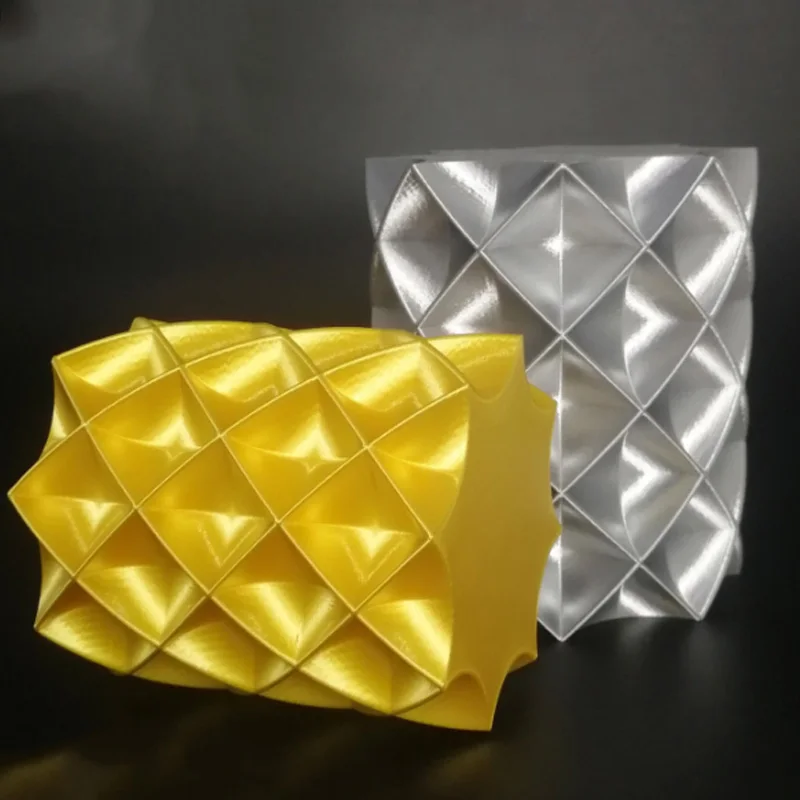
Polylactide (PLA, PLA)
The main feature of this material is its environmental friendliness, since polylactide is a polymer of lactic acid, and its raw materials are corn and sugar cane. The result is a completely biodegradable material, but at the same time it is not as durable and it easily absorbs water.
Polylactide is suitable for making toys, souvenirs. In the industry, PLA is used for food packaging, drug containers and surgical sutures, as well as use in bearings that do not carry a high mechanical load (for example, in modeling), which is possible due to the material's excellent slip coefficient.
One of the most important factors for 3D printing applications is the low melting temperature of only 170-180°C, which contributes to relatively low power consumption and the use of inexpensive brass and aluminum nozzles. As a rule, extrusion is carried out at 160-170°C. At the same time, PLA solidifies quite slowly (glass transition temperature is about 50°C), which should be taken into account when choosing a 3D printer.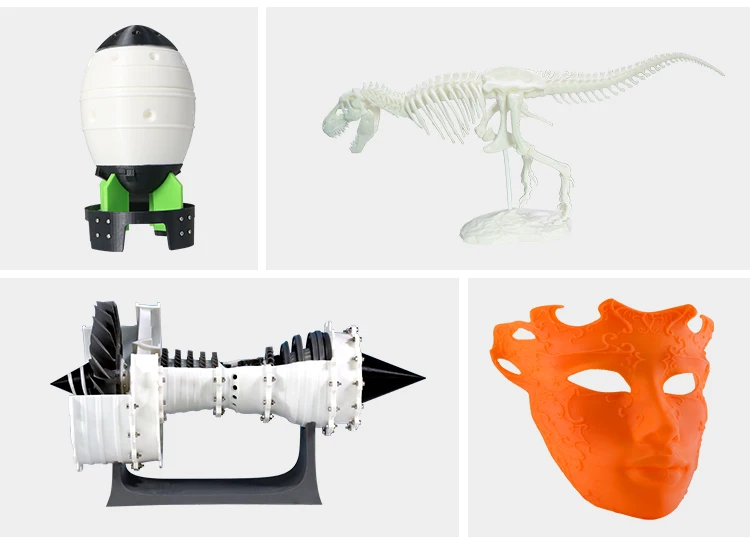 The best option is a device with an open case, a heated work platform (to avoid deformation of large models) and, preferably, additional fans to cool the fresh layers of the model.
The best option is a device with an open case, a heated work platform (to avoid deformation of large models) and, preferably, additional fans to cool the fresh layers of the model.
PLA has low shrinkage, i.e. loss of volume on cooling, which helps to prevent warping. However, shrinkage has a cumulative effect as the dimensions of printed models increase. In the latter case, the build platform may need to be heated to evenly cool the printed objects.
The cost of PLA is relatively low, which adds to the popularity of this material.
Acrylonitrile butadiene styrene (ABS)
ABS plastic is characterized by excellent mechanical properties, durability and low cost. In industry, ABS plastic is widely used in the production of car parts, housings for various devices, containers, souvenirs, various household accessories, etc. , at the same time, rather high indicators of thermal stability – from 90°C to 110°C.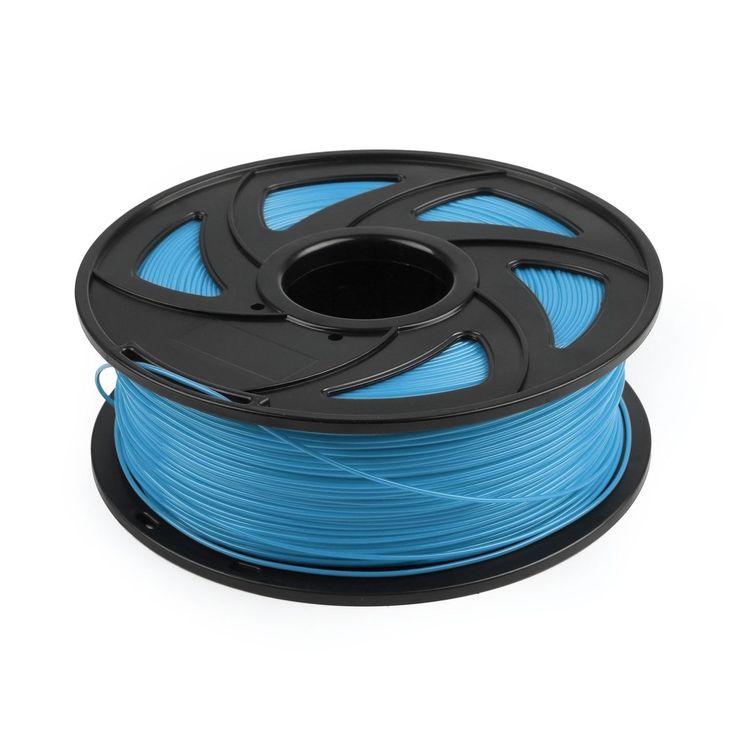 The exception is some types of ABS plastic, which break down when exposed to direct sunlight. At the same time, ABS plastic is easy to paint, which allows you to apply protective coatings on non-mechanical elements.
The exception is some types of ABS plastic, which break down when exposed to direct sunlight. At the same time, ABS plastic is easy to paint, which allows you to apply protective coatings on non-mechanical elements.
ABS extrusion temperature 180°C. And the low temperature spread between extrusion and glass transition allows ABS to cure faster than PLA.
ABS dissolves well in acetone, allowing large models to be produced piece by piece and glued together, greatly expanding the capabilities of inexpensive desktop printers.
The main disadvantage of ABS plastic can be considered a high degree of shrinkage during cooling - the material can lose up to 0.8% of its volume. This effect can lead to significant deformations of the model, twisting of the first layers and cracking.
To combat these unpleasant phenomena, two main solutions are used:
-
heated work platforms that help reduce the temperature gradient between the lower and upper layers of the model;
-
closed housings and adjustable oven background temperature.

It should be noted that at room temperature, ABS plastic does not pose a threat to health, but when heated, acrylonitrile vapors are released - a toxic compound that can cause irritation of mucous membranes and poisoning. Although the amount of Acrylonitrate produced in small scale printing is negligible, it is recommended that you print in a well ventilated area or use an exhaust hood.
ABS is not recommended for food containers and utensils (especially for storing hot food or alcoholic beverages) or toys for small children.
Polyvinyl alcohol (PVA)
Polyvinyl alcohol has the unique property of being water soluble. This material is used in 3D printers equipped with dual extruders, in which case supports for the model are printed from PVA, which are subsequently dissolved in water, and the created model does not require mechanical or chemical processing of irregularities. In addition, PVA can be used to create water-soluble master patterns for molds and molds themselves.
The mechanical properties of PVA are quite interesting. At low humidity, plastic has high tensile strength. With increasing humidity, strength decreases, but elasticity increases. The extrusion temperature is 160-175°C, which allows the use of PVA in printers designed for printing with ABS and PLA plastics.
Store PVA plastic in dry packaging and, if necessary, dry before use. Drying can be done in a pottery kiln or an ordinary oven. As a rule, drying of standard coils takes 6-8 hours at a temperature of 60-80°C. Exceeding 220°C will cause the plastic to decompose, which should be taken into account when printing.
Nylon
The great advantage of nylon is its wear resistance and low coefficient of friction.
For example, nylon is often used to coat friction parts, which improves their performance and often allows them to function without lubrication.
There are several types of nylon produced by different methods and with slightly different characteristics.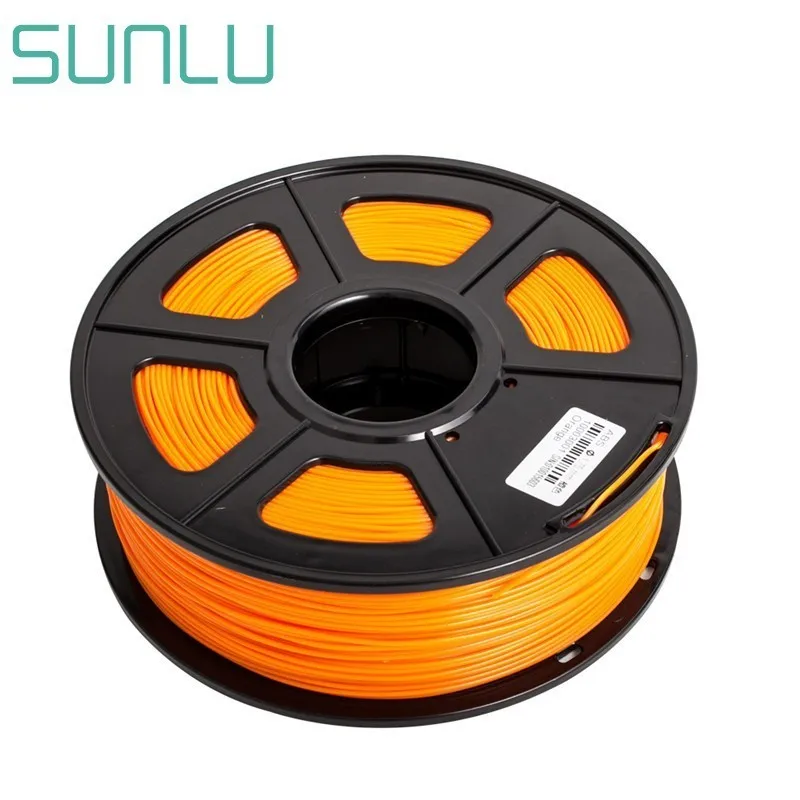 Let's talk about them in more detail.
Let's talk about them in more detail.
-
Nylon 66 and Nylon 6 are the best known. These two options are very similar. In terms of 3D printing, the main difference is the melting point: Nylon-6 melts at 220°C, while Nylon-66 melts at 265°C.
-
Many hobbyists prefer to use commercially available nylon threads such as trimmer wire. The diameter of such materials often corresponds to the diameter of standard FFF materials, which makes their use tempting. At the same time, these products are usually not pure nylon. In the case of trimmer rods, the material consists of nylon and fiberglass for an optimal combination of flexibility and rigidity. Fiberglass has a high melting point, and therefore printing with such materials is fraught with high nozzle wear and plugging.
-
Recently, attempts have been made to commercially develop nylon-based printing materials specifically for FDM/FFF applications, including Nylon-PA6 and Taulman 680.
 These grades are extrudable at 230-260°C.
These grades are extrudable at 230-260°C.
Since nylon readily absorbs moisture, store consumables in vacuum packaging or at least in a container with water-absorbent materials. A sign of excessively damp media will be steam escaping from the nozzle during printing, which is not dangerous, but may degrade the quality of the model.
When printing with nylon, it is not recommended to use a polyimide desktop coating as the two materials fuse together. As a coating, you can use adhesive tape with wax impregnation (masking tape). The use of a heated bed will help reduce the possibility of deformation of the model, similar to printing with ABS plastic. Due to the low coefficient of friction of nylon, extruders with studded feeders should be used.
The nylon layers have excellent adhesion, minimizing the chance of delamination.
Nylon is difficult to bond, making it difficult to print large multi-piece models. Alternatively, fusion of parts is possible.
Alternatively, fusion of parts is possible.
Because nylon can release toxic fumes when heated, we recommend that you print in a well-ventilated area or use an exhaust fan.
Polycarbonate (PC)
This material is attractive due to its high strength and toughness.
An important consideration is the health risk of printing: the raw material is often the toxic and potentially carcinogenic compound bisphenol A, so it is recommended to print in well-ventilated areas. And also do not use finished products made of polycarbonate at high temperatures.
The extrusion temperature depends on the printing speed to avoid cracking, but the minimum temperature at 30mm/sec can be considered as 265°C. When printing, the use of polyimide film is recommended for better adhesion to the desktop surface. The high susceptibility of polycarbonate to deformation requires the use of a heated platform and, if possible, a closed housing with heating of the working chamber.
Polycarbonate readily absorbs moisture, so it must be stored in a moisture-proof location, and when printing in humid climates, the print spool must be stored in the same way.
High Density Polyethylene (HDPE)
Despite being the most common plastic in the world, polyethylene is extremely rare in 3D printed materials. The reason for this is the difficulty in layer-by-layer manufacturing of models.
Polyethylene has a low melting point (130-145°C) and hardens at a temperature of 100-120°C, so the applied layers do not have time to set. In addition, polyethylene has a high shrinkage, which provokes the twisting of the first layers and the deformation of the models as a whole during uneven solidification. Accordingly, for printing with polyethylene, it is necessary to use heated platforms and heated working chambers, in addition, the printing speed must be sufficiently high.
Difficulties in use are compensated by the low price and general availability of this material..jpg) Recently, several devices have been developed for processing plastic waste from HDPE (bottles, food packaging, etc.) into standard filaments for printing on FDM/FFF printers. Examples are FilaBot and RecycleBot. Due to the simplicity of design, RecycleBot devices are often assembled by 3D craftsmen.
Recently, several devices have been developed for processing plastic waste from HDPE (bottles, food packaging, etc.) into standard filaments for printing on FDM/FFF printers. Examples are FilaBot and RecycleBot. Due to the simplicity of design, RecycleBot devices are often assembled by 3D craftsmen.
Melting polyethylene releases vapors of harmful substances, so it is recommended to print in well ventilated areas.
Polypropylene (PP, PP)
Polypropylene is a widely used plastic used in the manufacture of packaging materials, utensils, syringes, pipes, etc. The material has a low specific gravity, is non-toxic, has good chemical resistance, is resistant to moisture and wear and cheap enough.
The disadvantages of polypropylene are vulnerability to temperatures below -5°C and direct sunlight.
The main difficulty when printing with polypropylene is the high shrinkage of the material during cooling - up to 2.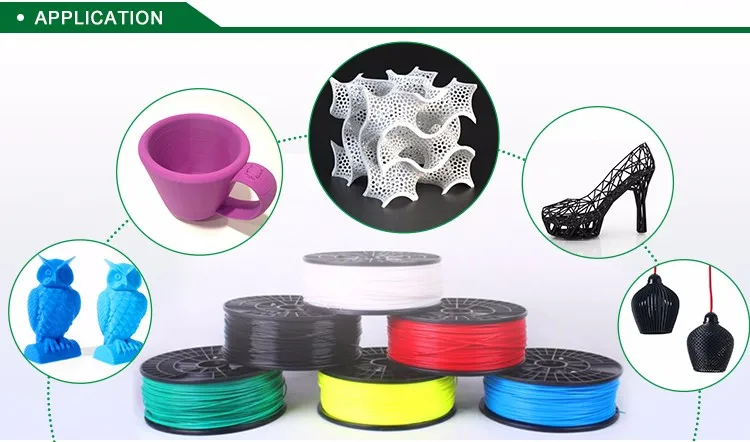 4%, so it is recommended to print on a heated platform to avoid model deformation. The minimum extrusion temperature is 220°C.
4%, so it is recommended to print on a heated platform to avoid model deformation. The minimum extrusion temperature is 220°C.
Polypropylene printing filaments are sold by Orbi-Tech, German RepRap, Qingdao TSD Plastic. Stratasys has developed a polypropylene simulant optimized for 3D printing called Endur.
Polycaprolactone (PCL)
Polycaprolactone (Hand Moldable Plastic, Mold-Your-Own Grips, InstaMorph, Shapelock, Friendly Plastic, Polymorph, Polymorphus, Ecoformax) has an ultra-low melting point of 60°C, which radically limits the number of 3D printers with which this material can be used.
Polycaprolactone is non-toxic, biodegradable polyester, which makes it suitable for medical applications and food containers. When ingested, polycaprolactone breaks down.
The material sticks easily to the surface of even a cold working table and is easy to paint.
In addition, polyprolactone is very plastic, so it can be reused many times.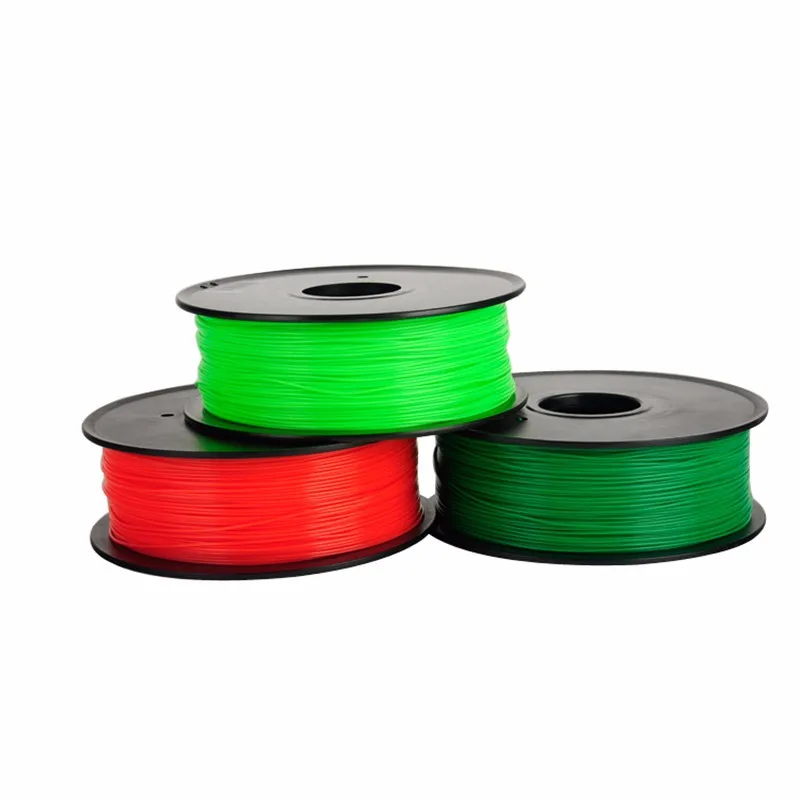
Polycaprolactone is not suitable for creating functional mechanical models due to its viscosity (glass transition temperature is -60°C) and low heat resistance (melting point is 60°C).
Polyphenylsulfone (PPSU)
This thermoplastic has such high strength and fire resistance that it is widely used in the aviation industry. It is resistant to solvents and fuels and lubricants.
Polyphenylsulfone is suitable for the production of tableware and food containers. Operating temperature range is -50°С - 180°С.
For all its merits, polyphenylsulfone is rarely used in 3D printing due to its high melting point, reaching 370°C. Printing at this temperature requires ceramic nozzles. Currently, the only active user of the material is Stratasys, which offers industrial Fortus installations.
Polymethyl methacrylate (Acrylic, plexiglass, acrylic, PMMA)
Polymethyl methacrylate is organic glass.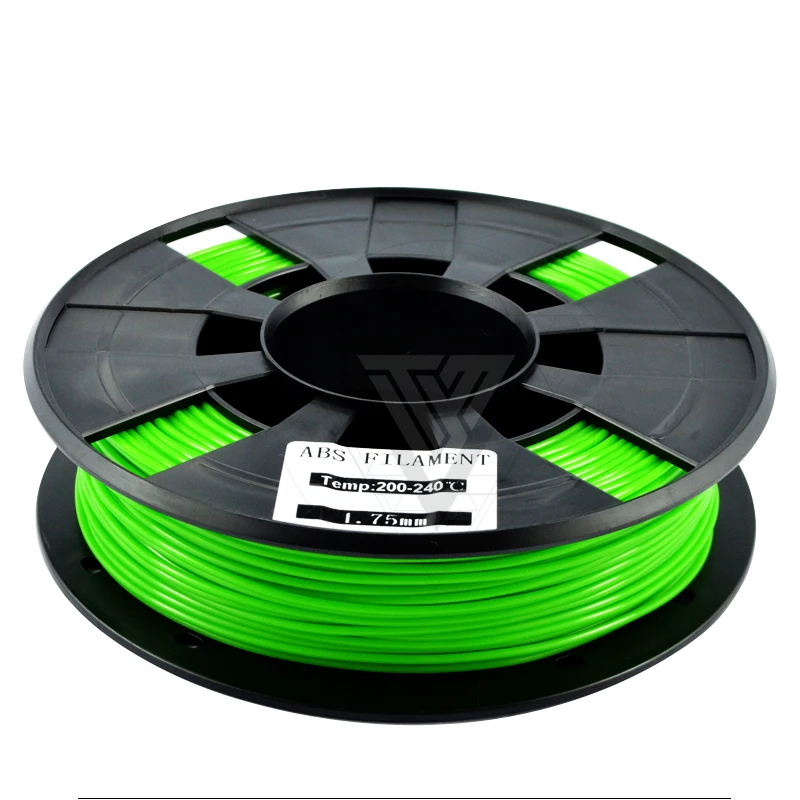
This material has good characteristics: strength, moisture resistance, environmental friendliness, easy bonding, plasticity and resistance to direct sunlight.
However, acrylic has a number of disadvantages and is not suitable for FDM/FFF printing.
-
First, PMMA does not store well in the form of spools of thread, as constant mechanical stress leads to the gradual destruction of the material.
-
To avoid bubbles, the print resolution must be fairly high, and this accuracy is rare among home printers.
-
Fast curing of acrylic requires tight environmental control of the working chamber and high print speed, while the print speed of FDM / FFF printers is inversely proportional to print resolution, which does not allow meeting the previous requirement.
However, attempts are being made to print with acrylic, but at the moment the best results with acrylic are shown by another printing technology ((MJM) from 3D Systems) - multi-jet modeling using photopolymer acrylic.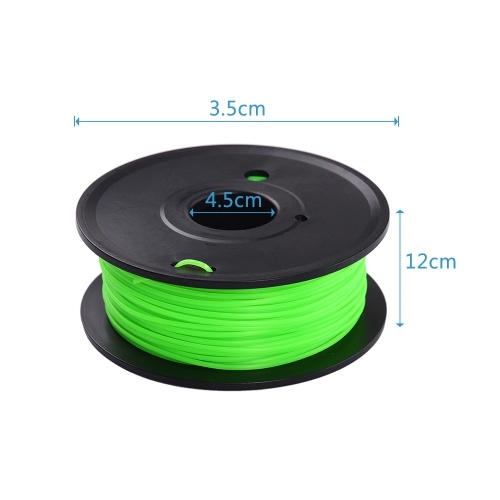 Stratasys has also made significant strides using its proprietary VeroClear photopolymer acrylic simulant on Objet Eden printers.
Stratasys has also made significant strides using its proprietary VeroClear photopolymer acrylic simulant on Objet Eden printers.
Polyethylene terephthalate (PET, PET)
The advantages of this material are that it has high chemical resistance to acids, alkalis and organic solvents, has good wear resistance at temperatures from -40°C to 75°C, and also , easy to machine.
There are a number of difficulties when printing PET: the melting point is 260°C, and the shrinkage on cooling reaches 2%. The solution to these issues are heated working platforms and closed working chambers with temperature control.
In order to obtain transparent models, it is necessary to cool them rapidly when they pass the glass transition threshold of 70°C - 80°C.
Undoubtedly, the material has become the focus of 3D craftsmen who use used containers as raw materials for the domestic production of 3D printing consumables. Recycling devices such as FilaBot or RecycleBot are used to make threads.
Recycling devices such as FilaBot or RecycleBot are used to make threads.
High impact polystyrene (HIPS)
High-impact polystyrene is widely used in industry in the production of various household products, building materials, disposable tableware, toys, medical instruments, etc.
The most attractive feature of polystyrene, in contrast to ABS, is that it is quite easily amenable to the organic solvent Limonen. Since Limonene has no effect on ABS plastic, it is possible to use polystyrene as a material for constructing soluble support supports. Compared to the convenient, water-soluble polyvinyl alcohol (PVA) plastic, polystyrene compares favorably with relatively low cost and resistance to humid climates that make PVA difficult to work with.
It's worth mentioning that some ABS manufacturers mix slightly cheaper polystyrene into their consumables. Accordingly, models made from such materials can be dissolved in Limonene along with supporting structures.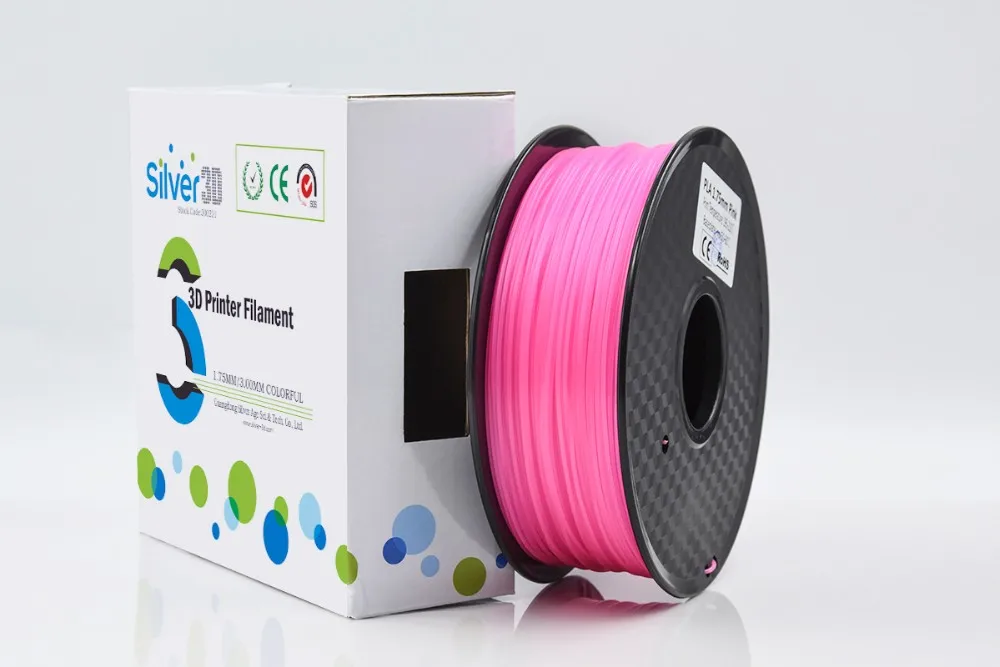
When polystyrene is heated to extrusion temperature, toxic fumes can be released, so printing in a well-ventilated area is recommended.
Simulators
All of the above plastics do not eliminate the need to use 3D printing technology when working with other materials such as wood, sand, metals. For this, imitators of these materials are created, based on the original material, and thermoplastic is the link. Let's consider them in a little more detail.
Wood Simulators (LAYWOO-D3, BambooFill)
LAYWOO-D3 is a revolutionary invention by Kai Party. This material consists of 40% natural wood chips of microscopic size and 60% binder polymer. As a result, products imitate wood in appearance and smell.
LAYWOO-D3 is virtually indestructible and therefore does not require the use of a heated platform.
Another advantage is that these materials are non-toxic and completely safe.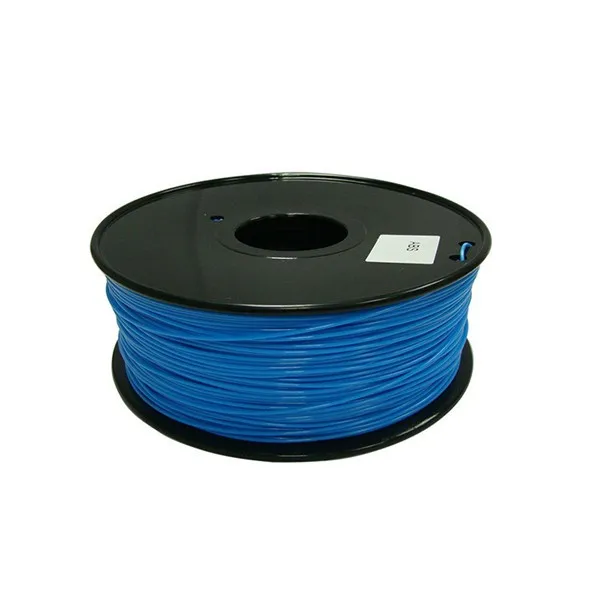
When printing, you can use the unique feature of wood imitators, because depending on the extrusion temperature (180°C-250°C), the shade can change, the higher the temperature, the darker the shade of the wood.
In addition, upon completion of printing, ready-made models are easy to work on, they lend themselves well to any mechanical processing, and are easy to color.
The main disadvantage of such materials is their cost, which is almost four times higher than the prices of PLA and ABS plastics.
Alternative materials are currently being developed and tested, such as BambooFill from the Dutch company ColorFabb.
Sandstone Simulators (Laybrick)
Laybrick is a composite material also invented by Kai Parthi. This time he set out to create an imitation of sandstone, using the proven method of mixing a binder with a filler - in this case a mineral one.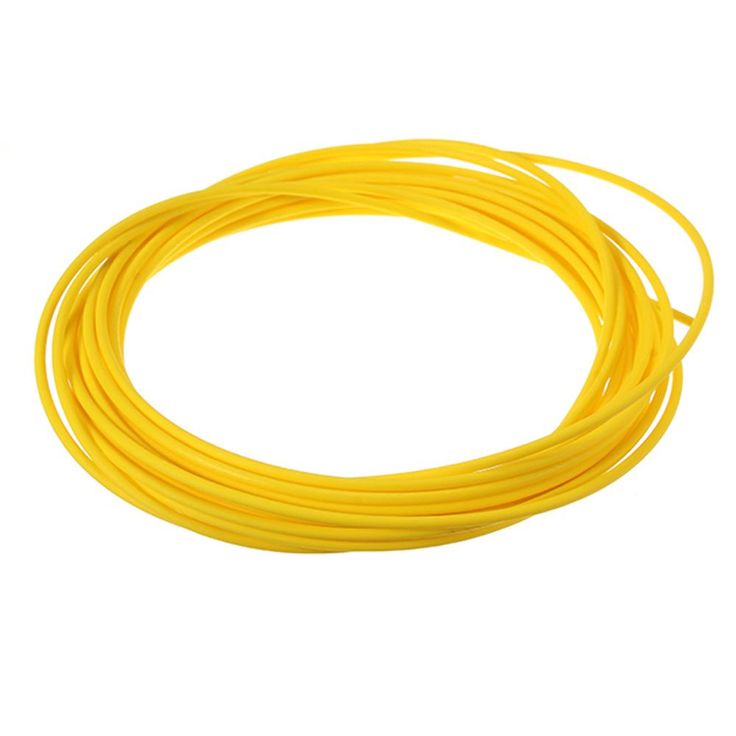
Laybrick allows you to print objects with different surface textures. How it works: at low extrusion temperatures (165°C-190°C) finished products have a smooth surface, with increasing temperature the material becomes rougher, up to a high degree of similarity to natural sandstone at an extrusion temperature above 210°C.
The advantages of wood imitators are preserved here as well. The material is easy to work with, does not require heating of the working platform, there is no deformation during shrinkage and toxic fumes when heated.
The only drawback is the high cost of the material.
Metal simulants (BronzeFill)
In FDM/FFF printing, metal simulants are just emerging. One of them is BronzeFill. This is a transparent PLA-plastic filled with bronze microparticles. The material is currently in beta testing and should prove usable in most printers.
However, products based on this simulant can be easily polished, achieving a high external resemblance to solid metal products.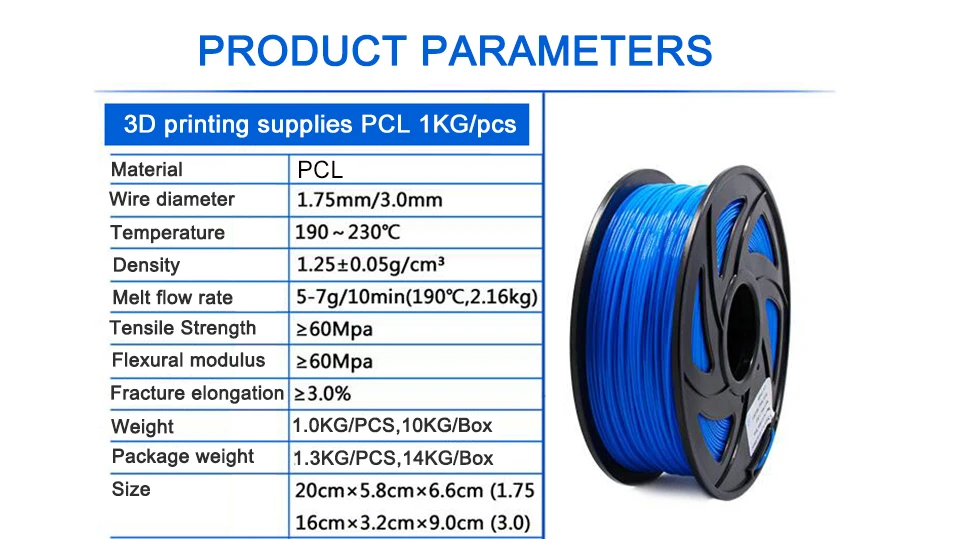 At the same time, it should be taken into account that the binding element of the material is thermoplastic, with appropriate mechanical and temperature limitations.
At the same time, it should be taken into account that the binding element of the material is thermoplastic, with appropriate mechanical and temperature limitations.
This review of consumables for 3D printers with technology (FDM/FFF) can be completed. To select the appropriate consumables for your tasks, go to the category "Printing Equipment > 3D Equipment > Consumables", if you have any questions, you can always contact our consultants.
Optimal temperatures for 3D printing PLA, PETG, Nylon and TPU plastics
3DPrintStory 3D printing process Optimal temperatures for 3D printing with PLA, PETG, Nylon and TPU plastics
Although almost all 3D printing materials are thermoplastics, each has its own temperature requirements.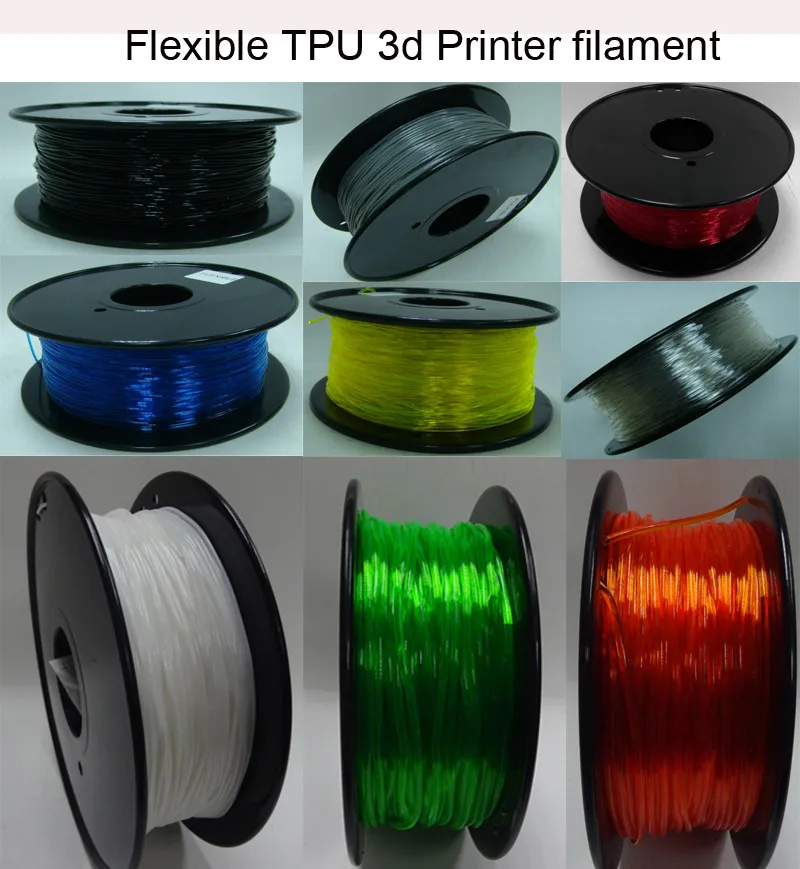 The specificity arises from the fact that individual fibers differ greatly from each other in chemical composition. Some, like PLA, are made from starches, while others, like ABS, are oil-based.
The specificity arises from the fact that individual fibers differ greatly from each other in chemical composition. Some, like PLA, are made from starches, while others, like ABS, are oil-based.
The chemical composition of a thermoplastic directly affects its glass transition temperature, the temperature at which the material changes from a brittle filament to an elastic substance that can be extruded. It is this temperature that must be maintained for high-quality 3D printing. And since each material has a different glass transition temperature, each plastic must be used for 3D printing at a different extruder temperature.
In addition to a specific extrusion temperature, some materials require a specific hot bed temperature. When some fibers cool, they shrink and deform. The heated bed allows these plastics to cool more slowly during extrusion so that bending is minimized.
The heated layer also provides additional adhesion, ensuring that the first layer adheres well and the part does not separate from the base during 3D printing.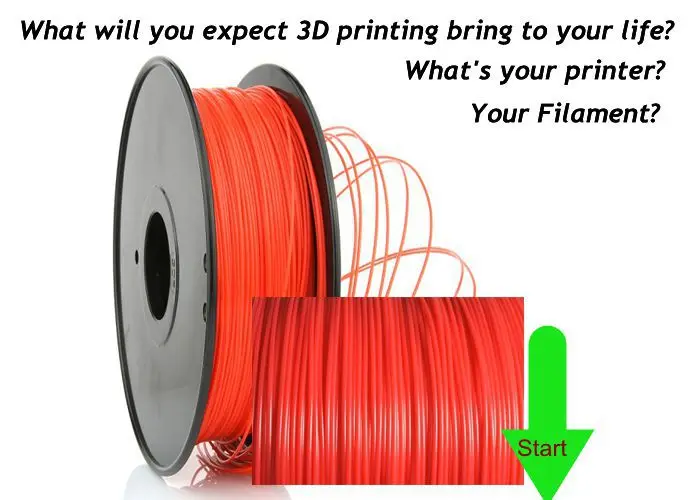
So 3D printing temperature is a very important parameter that differs depending on the material that is used.
Recommended temperature for 3D printing with PLA plastic
PLA is the most popular plastic in the world today. One of the reasons is undemanding to the conditions of 3D printing.
PLA prints best around 210°C, although it is very versatile and can work between 180 and 230°C. It does not require a heated bed to print, but if your 3D printer has one, set the bed temperature somewhere between 20 and 60° C.
When printing with PLA, make sure the cooling fans are on. PLA produces the best results when cooled properly.
Overall, PLA is very easy to use and doesn't require much drumming to be successful.
Recommended temperature for 3D printing with ABS
Until recently, ABS was the most widely used material for 3D printing. Then ABS lost to PLA in the battle for the lead. The main reason is the great difficulty during 3D printing.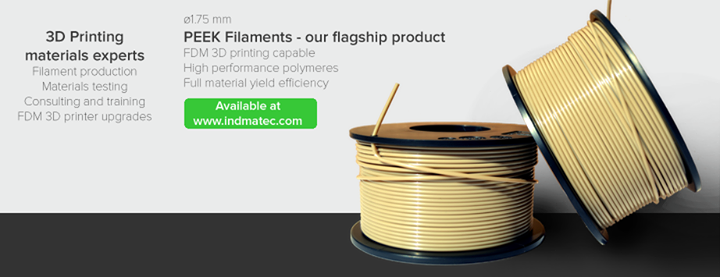
ABS requires a slightly higher temperature to print successfully. Recommended nozzle temperature is 210 to 250°C. Requires heated bed set to 80 to 110°C.
In addition, ABS should be printed on a closed 3D printer so that the plastic cools down more slowly. This is because the ABS shrinks as it cools, and if the model cools too quickly, it deforms. For the same reason, the cooling fans must be turned off when printing ABS.
Recommended temperature for 3D printing PETG plastic
PETG is a relative newcomer to the 3D printing media market, combining many aspects of PLA and ABS.
It requires very high nozzle temperatures of 220 to 250°C. However, unlike ABS, PETG does not require a heated bed.
PETG prints best with blue masking tape on the table. Without it, the table must be heated to 50-75°C so that the extruded material will adhere well to the table on the first layer. And because this material doesn't flex like ABS, cooling fans can be turned on during 3D printing.
Although PETG is not as easy to use as PLA, it is far less demanding than ABS and is now the top of the list in popularity.
Recommended temperature for 3D printing Nylon with plastic
Nylon is another popular and interesting material, although it is more difficult to work with.
It requires a higher temperature than any of the other materials on the current list: 240 to 260° C is recommended. Required table temperature is 70 to 100° C. However, the glue stick layer is very important because Nylon suffers from adhesion quality problems first layer.
Nylon should not be printed with cooling fans as this will cause layer adhesion problems.
This material is also very hygroscopic, meaning it absorbs moisture from the air very actively. This significantly reduces the quality of 3D printing, so the nylon must be dried before printing or a quality thermal box must be used.
Nylon can be problematic at first, but once you learn how to print properly with this material, it will cover many of your questions and needs.





/cdn0.vox-cdn.com/uploads/chorus_asset/file/8170811/passivdom_autonomous_house_designboom_03_16_2017_818_001_818x544.jpg)

